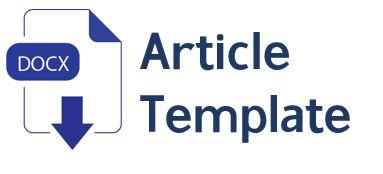Liquid Waste Management Techniques by Using Equipment Operation System and Ipal System in PT Pertamina Trans Continental Dumai, Riau
DOI:
https://doi.org/10.31258/tromes.3.2.41-47Keywords:
Water Quality, Liquid Waste, Management, System Oil SpillAbstract
Managing liquid waste from the oil and gas industry is crucial to prevent water pollution. PT Pertamina Trans Kontinental Dumai is one of the companies active in oil and gas operations, which produces liquid waste from exploration and production processes. This study aims to determine the company's fluid waste management system and the readiness of oil spill response equipment. The methods include direct observation, interviews with relevant parties, and literature review. The observations indicate that wastewater treatment is carried out through three stages: physical separation, chemical treatment, and biological processes using aerated tanks and sedimentation. The quality test results show that parameters such as BOD, COD, oil and grease, ammonia, total phenol, pH, and temperature are within the established quality standards. Additionally, PT Pertamina Trans Kontinental Dumai has complete and well-maintained emergency response facilities for oil spills, including oil booms, oil skimmers, dispersants, and sorbents. In conclusion, the management of liquid waste and equipment readiness for oil spill response at PT Pertamina Trans Kontinental Dumai complies with standards, thereby minimizing the risk of marine environmental pollution.
Downloads
References
Aljehani, A.A. (2019). Analisis Safety Mooring dan Regulasi Pemanduan pada Pt. Pertamina Makassar Marine Region. Politeknik Ilmu Pelayaran Makassar 54 p.
Arifin, N., Siregar, S.H., & Nasution, S. (2019). Determination of Water Quality in Physic and Chemical Use Storet Index and Pollution Index in Coastal Waters, Dumai, Riau Province. Aquasains, 8(1): 743.
Darsono, N., Syibli, Y.M., & Fajar, M.A. (2021). Peranan Kesyahbandaran dan Otoritas Pelabuhan Khusus Batam dalam Izin Pembangunan Terminal Khusus. Jurnal Sains Teknologi Transportasi Maritim, 3(2): 41-49.
Indrayani, L. (2018). Pengolahan Limbah Cair Industri Batik Sebagai Salah Satu Percontohan Ipal Batik di Yogyakarta. Ecotrophic, 12(2): 173-185.
Nugraha, Y.W., & Setiyono, S. (2019). Desain Instalasi Pengolahan Air Limbah Industri Pt Natura Perisa Aroma Lampung. Jurnal Air Indonesia, 11(2): 60-78.
Pramono, J. (2023). Handbook 15 Clsr (Corporate Life Saving Rules). Buku. Dumai. PT. Pertamina Trans Kontinental. Diakses pada tanggal 25 Januari 2024.
Pt. Pertamina Refinery Unit II, Dumai. (2013). Materi In-House Training Instalasi Pengolah Air Limbah (Ipal). Laporan. Dumai. PT. Pertamina RU II Dumai. Diakses pada tanggal 25 Januari 2024.
Salim, A., & Sutanto, T.E. (2013). Model Pergerakan Tumpahan Minyak di Perairan Selat Sunda dengan GNOME Analysis. Al-Kauniyah: Jurnal Biologi, 6(2): 130-137.
Sato, A., Utomo, P., & Abineri, H.S.B. (2015). Pengolahan Limbah Tahu Secara Anaerobik-aerobik Kontinyu. Seminar Nasional Sains dan Teknologi Terapan III, 185–192.
Slamet, A.W.P. (2017). Pengolahan Tipikal Instalasi Pengolahan Air Limbah Industri Tahu di Kota Surabaya. Jurnal Teknik ITS, 6(2): 131–136.
Suleman, N., & Lambayu, N. (2022). Teknik Pengolahan Limbah Cair Tahu dengan Penambahan Bakteri Bio Treatment. Prosiding Senastitan: Seminar Nasional Teknologi Industri Berkelanjutan, 2(1): 19-25.
Umroningsih, U. (2022). Limbah Cair Menyebabkan Pencemaran Lingkungan. Jisos: Jurnal Ilmu Sosial, 1(7): 647-666.
Undang - Undang No. 32 Tahun 2009 Tentang Perlindungan dan Pengelolaan Lingkungan Hidup Pasal 1 Ayat 14.
Downloads
Published
Issue
Section
License
Copyright (c) 2025 Aprilia Wulandari, Jacinda Qoidatun Shandy (Author)

This work is licensed under a Creative Commons Attribution 4.0 International License.



